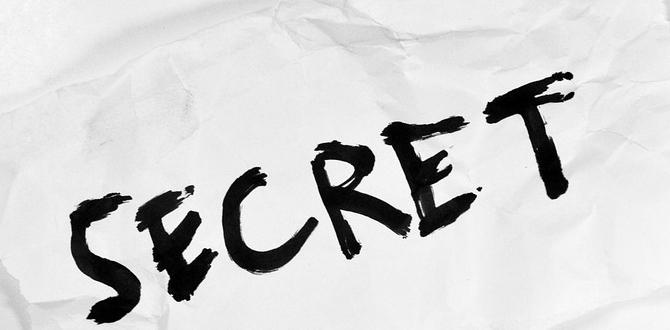Discover the best Banff walkable routes and maps with our easy-to-follow guide. Perfect for beginners, we’ll help you navigate Banff National Park’s stunning trails and townsite, ensuring a comfortable and memorable walking adventure. Get ready to explore Canada’s most iconic landscapes without any hassle!
Banff, Alberta, is a gem nestled in the heart of the Canadian Rockies. While many visitors flock to Banff for its breathtaking mountains and turquoise lakes, exploring the area on foot offers a truly intimate experience. However, navigating the vast network of trails and the charming townsite can feel a bit overwhelming at first.
Don’t worry, we’ve got you covered! This guide is designed to make your walking adventures in Banff simple and enjoyable, from easy strolls to moderate hikes. We’ll break down the best walkable routes and essential mapping tools to help you feel confident and prepared, no matter your fitness level.
Why Explore Banff on Foot?
Walking in Banff isn’t just about getting from point A to point B; it’s about immersing yourself in the unparalleled natural beauty. The crisp mountain air, the scent of pine, and the possibility of spotting local wildlife are experiences you’ll miss if you’re always in a car. Plus, many of Banff’s most iconic sights are best appreciated at a slower pace. Imagine strolling along the Bow River, feeling the spray from a waterfall, or simply taking in the panoramic views that unfold around every corner.
Benefits of Walking in Banff:
- Enhanced Sightseeing: Discover hidden viewpoints and details you’d miss from a vehicle.
- Health & Well-being: Enjoy the physical and mental benefits of walking in a pristine natural environment.
- Wildlife Encounters: Increase your chances of seeing animals like deer, elk, or even bighorn sheep in their natural habitat (always maintain a safe distance!).
- Environmental Friendliness: Reduce your carbon footprint by opting for walking and leaving your car parked.
- Cost Savings: Save on gas and parking fees by exploring walkable areas.
Banff Townsite: Your Gateway to Discovery
The town of Banff itself is incredibly walkable and serves as an excellent base for exploring the surrounding area. Most amenities, shops, restaurants, and accommodations are clustered along Banff Avenue and its side streets, making it easy to get around on foot. Even if you plan to venture into the wilderness, starting your exploration in town is a great way to get your bearings.
Must-Visit Walkable Spots in Banff Townsite:
- Banff Avenue: The main street, lined with shops, galleries, and restaurants. It offers stunning views of Cascade Mountain at its northern end.
- Bow River Pathway: A paved, multi-use pathway following the scenic Bow River. It’s perfect for leisurely strolls, jogs, or bike rides. Access points are numerous throughout the townsite.
- Central Park & Cascade Gardens: Located near the Banff Park Museum, these areas offer beautiful landscaping, picnic spots, and lovely river views.
- Banff Pedestrian Bridge: Connects the townsite to the south side of the Bow River, offering fantastic photo opportunities of the river and surrounding peaks.
- Tunnel Mountain Drive (partial walk): While a scenic drive, sections of this road offer incredible viewpoints and can be explored on foot for shorter distances, especially the lower portions near town.
Essential Banff Walking Routes & Maps
When planning your walking adventures, having reliable maps and knowing the right routes is key. Banff National Park offers a spectrum of trails, from gentle paved paths to more challenging mountain treks. For beginners, focusing on well-maintained trails and accessible routes is ideal.
1. Fenland Trail (Easy)
This is one of the most accessible and enjoyable short walks in Banff, perfect for all ages and fitness levels. It’s a flat, interpretive loop trail that circles a beautiful marsh area.
- Distance: 2 km loop
- Elevation Gain: Minimal (flat)
- Time: 30-60 minutes
- Starting Point: Near the Fenland Recreation Centre, accessible from Banff Avenue via Marten Street.
- Highlights: Boardwalks through the marsh, excellent bird-watching opportunities, views of Mount Inglismaldie.
- Why it’s great for beginners: Paved and well-maintained, minimal elevation, easy to follow.
2. Bow River Trail to Bow Falls (Easy)
This paved pathway is a classic Banff experience, offering stunning river views and leading to the powerful Bow Falls. You can start this walk from various points in town, making it very convenient.
- Distance: Varies, but approximately 3 km round trip from the Banff Park Museum to Bow Falls viewpoint and back.
- Elevation Gain: Minimal
- Time: 1-1.5 hours (depending on stops)
- Starting Point: Numerous access points along Banff Avenue or near the Banff Park Museum.
- Highlights: Scenic Bow River, iconic Bow Falls, opportunities to spot elk and deer.
- Why it’s great for beginners: Mostly flat, paved, well-signed, and offers impressive natural beauty close to town.
3. Johnson Lake Loop (Easy)
A popular spot for locals and visitors alike, Johnson Lake offers a beautiful, easy loop with opportunities for swimming in warmer months. It’s a short drive from town but well worth it for its serene setting.
- Distance: 2.8 km loop
- Elevation Gain: Minimal
- Time: 45-75 minutes
- Starting Point: Johnson Lake day-use area parking lot.
- Highlights: Gentle walk around a picturesque lake, picnic areas, sandy beach, views of Cascade Mountain.
- Why it’s great for beginners: Flat and easy terrain, clear path, beautiful lake scenery.
4. Cascade Ponds Trail (Easy)
Located just a short drive from the Banff townsite, Cascade Ponds offers a very gentle and scenic walk through open meadows with stunning views of Cascade Mountain. It’s an ideal spot for a relaxed outing, especially for families.
- Distance: 1.5 km loop
- Elevation Gain: Minimal
- Time: 30-45 minutes
- Starting Point: Cascade Ponds day-use area parking lot.
- Highlights: Open parkland, picnic tables, views of Cascade Mountain and surrounding peaks, calm ponds.
- Why it’s great for beginners: Extremely flat, easy to navigate, great for a leisurely pace.
5. Tunnel Mountain Summit (Moderate-Strenuous)
For those looking for a bit more of a challenge with rewarding views, Tunnel Mountain is a popular choice. It’s a well-trodden path that starts right from the townsite. While it has a steady incline, it’s accessible for most reasonably fit individuals.
- Distance: 4.5 km round trip
- Elevation Gain: 266 meters (873 feet)
- Time: 1.5 – 3 hours
- Starting Point: Trailhead located near St. Julien Road, accessible from the townsite.
- Highlights: Panoramic views of Banff townsite, Bow Valley, Vermilion Lakes, and surrounding mountains.
- Why it’s a good moderate option: Well-maintained trail, clear path, significant elevation but manageable for many, incredible payoff views.
Getting Your Bearings: Essential Maps and Tools
Having the right map is crucial for a safe and enjoyable walking experience in Banff. While many trails are well-marked, understanding the terrain and your position is always a good idea.
Recommended Map Resources:
| Resource | Description | Best For |
|---|---|---|
| Parks Canada Banff Maps | Official maps provided by Parks Canada. These are detailed and accurate, covering trails, facilities, and points of interest. Available online and at visitor centres. | All visitors, especially those planning to explore trails beyond the townsite. Crucial for understanding park regulations and trail conditions. |
| AllTrails App/Website | A popular crowdsourced app with a vast database of trails, user reviews, photos, and downloadable maps (with a premium subscription). | Beginners and experienced hikers looking for diverse trail options and real-time trail conditions. |
| Google Maps (Offline Maps) | While not specifically for wilderness trails, Google Maps is excellent for navigating within Banff townsite and to trailheads. Download offline maps before you go. | Navigating the town, finding trail access points. |
| Banff & Lake Louise Visitor Information Centres | Staff here can provide indispensable advice, recommend suitable trails based on your abilities and current conditions, and offer paper maps. | Getting personalized recommendations and up-to-date information. |
Tips for Using Maps:
- Download Offline Maps: Cell service can be spotty in the mountains. Download maps from apps like AllTrails or Google Maps before you leave Wi-Fi.
- Familiarize Yourself: Look at your map before you start. Understand the route, distances, and any significant elevation changes.
- Carry a Physical Map: A waterproof paper map can be a lifesaver if your electronic devices fail.
- Note Trail Markers: Pay attention to cairns (piles of rocks) and blazes (painted marks on trees) that indicate the trail.
Safety First: Essential Tips for Walking in Banff
Banff’s beauty is undeniable, but it’s also a wild place. Prioritizing safety ensures your adventure is both fun and worry-free.
Key Safety Considerations:
- Bear Safety: Banff is bear country. Always carry bear spray and know how to use it. Make noise as you hike to avoid surprising bears. Hike in groups if possible. Learn more about bear safety on Parks Canada’s website.
- Weather: Mountain weather can change rapidly. Check the forecast before you go and pack layers. Even in summer, temperatures can be cool, especially in the mornings and evenings or at higher elevations.
- Stay on Trails: Stick to designated paths to protect the fragile environment and avoid getting lost or encountering unexpected hazards.
- Water and Snacks: Carry plenty of water, especially on longer walks. Pack energy-boosting snacks like trail mix, energy bars, or fruit.
- Footwear: Wear comfortable, sturdy walking shoes or hiking boots. Even for short walks, good support is essential.
- Tell Someone Your Plans: Let a friend or family member know where you are going and when you expect to return.
- First-Aid Kit: Carry a basic first-aid kit for minor injuries like blisters or scrapes.
- Sun Protection: The sun can be intense at higher altitudes. Bring sunscreen, a hat, and sunglasses.
Beyond the Townsite: Exploring Nearby Walkable Gems
While the townsite offers plenty, a short drive can open up even more stunning walking opportunities. These are still accessible with minimal driving and offer quintessential Banff scenery.
1. Moraine Lake Shoreline (Easy)
While access to Moraine Lake Road is restricted to shuttles, bikes, and certain tour buses (private vehicles are not allowed), the views are spectacular. Once there, the walk along the lake’s edge is breathtaking.
- Distance: Varies, shoreline walk is relatively flat.
- Elevation Gain: Minimal
- Time: Flexible, depending on how far you walk along the shore.
- Starting Point: Moraine Lake parking area (accessed by shuttle/bus).
- Highlights: Iconic turquoise waters, Valley of the Ten Peaks, beautiful alpine setting.
- Note: Plan transportation to Moraine Lake well in advance. Check Parks Canada for shuttle information.
2. Lake Louise Lakeshore Trail (Easy)
One of the most famous lakes in the world, Lake Louise offers an accessible and incredibly scenic lakeshore walk. It’s a must-do for any visitor to Banff.
- Distance: 4 km round trip
- Elevation Gain: Minimal
- Time: 1-1.5 hours
- Starting Point: Lake Louise shoreline, near the Fairmont Chateau Lake Louise.
- Highlights: Famous glacier-fed turquoise waters, Victoria Glacier, iconic Fairmont Chateau, surrounding mountain scenery.
- Why it’s great for beginners: Paved and flat path, astonishing scenery, easy to access from the main village area.
3. Johnston Canyon (Easy to Moderate Sections)
Johnston Canyon is a very popular destination with a unique catwalk system that takes you through a narrow canyon to stunning waterfalls. The initial sections are very accessible.
- Distance:
- Lower Falls: 2.4 km round trip
- Upper Falls: 5.0 km round trip
- Elevation Gain:
- Lower Falls: About 60 meters
- Upper Falls: About 120 meters
- Time:
- Lower Falls: 1 hour
- Upper Falls: 2 hours
- Starting Point: Johnston Canyon parking lot along the Bow Valley Parkway.
- Highlights: Waterfalls, canyon scenery, catwalks, Ink Pots (further hike).
- Why it’s great for beginners: The Lower Falls walk is paved and has minimal elevation, making it very accessible.
Packing Essentials for Your Banff Walks
Comfort and preparedness are key when you’re out exploring. Even for a short walk, a few essentials can make a big difference.
Your Walking Essentials Checklist:
- Comfortable Walking Shoes: Broken-in and supportive.
- Layered Clothing: Moisture-wicking base layer, insulating mid-layer (fleece or down), and a waterproof/windproof outer shell.
- Water Bottle/Hydration Pack: Essential for staying hydrated.
- Snacks: High-energy options like nuts, dried fruit, or energy bars.
- Sun Protection: Sunscreen, sunglasses, and a hat.
- Insect Repellent: Especially important in warmer months.
- Bear Spray: If venturing on trails outside the immediate townsite.
- Small First-Aid Kit: For any minor emergencies.
- Navigation Tools: Map, compass, or GPS device/app.
- Camera: To capture the incredible scenery!
For travelers managing personal care needs, particularly parents with young children or adults requiring adult or child diapers, ensure these are packed discreetly but accessibly. Comfortable, reliable diapers can significantly reduce stress during longer walks or day trips, allowing for more focus on enjoying the scenery. Having a small bag with changing essentials and a few spare diapers can provide peace of mind for unforeseen needs.
Frequently Asked Questions
Q1: Are the trails in Banff safe for solo female travelers?
Yes, Banff is generally a very safe destination for solo travelers. However, it’s always wise to follow general safety precautions: stick to well-marked and populated trails during daylight hours, let someone know your plans, carry bear spray if you’re going on longer hikes, and download offline maps.
Q2: Do I need a Parks Canada Discovery Pass to walk in Banff?
Yes, you need a Parks Canada Discovery Pass for entry into Banff National Park. This pass covers your vehicle and its occupants for access to national parks across Canada. You can purchase it online or at Parks Canada visitor centers.
Q3: What is the best time of year to go for walks in Banff?
The prime walking and hiking season in Banff is typically from late May to early October when most trails are free of snow and the weather is most favorable. Summer (July-August) offers the warmest temperatures, while June and September offer fewer crowds and beautiful fall colours. Winter offers opportunities for snowshoeing and winter hiking on groomed trails.
Q4: Can I walk to Lake Louise or Moraine Lake from the Banff townsite?
No, it is too far to walk to Lake Louise or Moraine Lake from the Banff townsite. These lakes are located about 50-60 kilometers (30-40 miles) west of Banff town. You will need to use the Roam Public Transit, a shuttle service, or drive (if permitted and you have parking reservations, which are often required) to access




